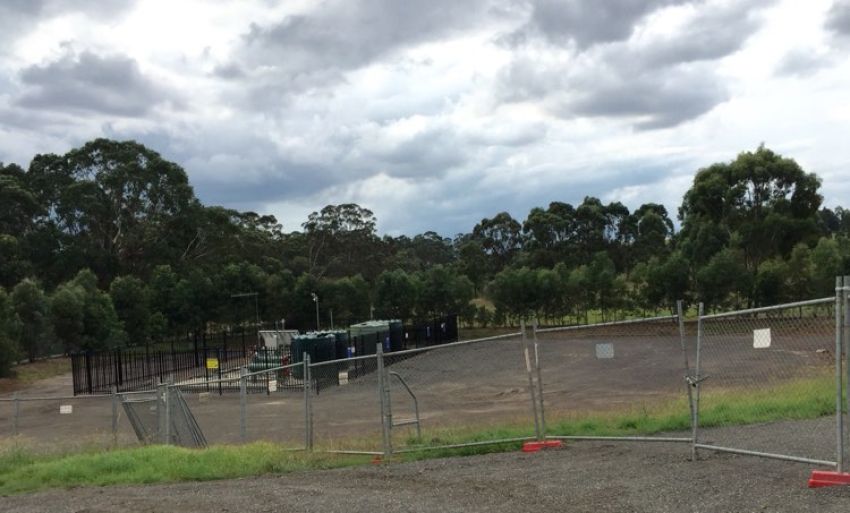
Environmental Justice Australia (EJA) has revealed that energy corporation AGL has only set aside a small amount to rehabilitate its three coal-fired power stations as well as its coal seam gas operations.
EJA’s findingswere released on March 31 as AGL posted a $2.3 billion loss for the first half of financial year 2020–21, primarily from its coal-fired power stations.
It has subsequently announced plans to separate its coal, oil and gas assets from its renewable energy assets in what critics have described as a cynical attempt to “ringfence” it from criticism of its polluting power stations.
Greenpeace criticised AGL for only pretending to move to renewables and that the announcement of two businesses — one to “house AGL’s token renewable energy assets” and a separate company to hold its coal assets including some of the nation’s top climate polluters was a fake branding exercise.
It said on April 8 that AGL’s strategic plan includes relying on climate-wrecking coal-burning power stations to generate the bulk of its power for decades to come — in the case of Loy Yang A, until 2048.
An influx of renewable energy into the electricity market has pushed down wholesale prices, especially during the day, eroding the profits of coal-fired power stations.
AGL owns the Bayswater and Liddell power stations in the Hunter Valley in NSW, and the Loy Yang A power station in the Latrobe Valley in Victoria.
It bought the NSW power stations from the NSW government in 2014, and Loy Yang A and its associated brown coal mine from its previous owners in 2012. Loy Yang A was privatised, along with the rest of Victoria’s power stations, by the Liberal Jeff Kennett government in the 1990s.
AGL has also operated the Camden coal seam gas project in Sydney’s south west since 2001. Following community campaigns demanding it close, because of leaky gas wells and proximity to the rapidly-growing urban settlements, it announced in 2016 it would bring forward its plan to decommission the wells to 2023.
The energy giant announced in 2015 that the 50-year-old Liddell coal-fired power station would be closed by late 2022, and later revised that to April 2023.
Toxic legacy
AGL’s ever-less profitable coal-fired power stations and its CSG plant carry a vast toxic legacy.
Vast amounts of ash from each of the power station furnaces is dumped in huge open air pits. Analysis by EJA shows that the ash contains toxic heavy metals such as arsenic, lead, mercury, selenium, thallium and other toxic pollutants which can become airborne as dust blows off the dry dams. It can also leach into groundwater.
Liddell uses a large freshwater Lake — Lake Liddell — as its cooling system, an inefficient technique that was popular when the plant was designed in the 1960s.
The Liddell ash dam and nearby Bayswater power station ash dam both drain into Lake Liddell. The Hunter Community Environment Centre’s analysis of ash dam pollution at NSW coal-fired power stations has shown that Lake Liddell is contaminated with pollutants including aluminium, iron, boron, selenium and very high levels of copper.
In 2016, AGL closed the lake, previously used as a public recreation area, after the brain-eating amoeba naegleria fowleri was discovered in the water. This lake, as well as the enormous ash dam nearby will need to be cleaned up as part of the power station decommissioning.
Meanwhile, the Loy Yang A power station has its own large brown coal mine from where its fuel supply originates. The pit is shared with its twin power station, Loy Yang B, which is owned by Hong Kong-based Chow Tai Fook Enterprises.
This giant pit — 200 metres deep and three kilometres long — will need to be covered over when the twin Loy Yang power stations are retired.
Leaving the coal seams exposed to air creates a fire hazard. The nearby Hazelwood pit caught fire in February 2014 and burned for 45 days, cloaking the region in thick toxic smoke.
The cheapest option to cover in the pit is to flood it with water. However, there is no indication that AGL will be given permission to use such large quantities of water, which would then require topping up, even during droughts, to compensate for evaporation losses.
As for the Camden Gas Project, anti-gas organisers have spoken out against waste water from the gas wells being dumped into Sydney’s sewerage system, and gas leaking from wells has been corroborated by residents who noticed gas bubbling out of the ground around well sites during flooding.
All the wells need to be decommissioned and capped and toxic residues and contaminated soils cleaned up.
Fund inadequate
EJA said that in its 2020 annual report AGL had only allocated $45 million for current and $299 million for non-current environmental restoration across Liddell, Bayswater, Loy Yang A and Camden CSG projects.
EJA lawyer Bronya Lipski said this amount falls well short of what is needed and is particularly concerned about AGL shirking the clean-up at Loy Yang A.
“There were already huge concerns about whether AGL would adequately rehabilitate its Loy Yang power station site ... Costs allocated for rehabilitation appear to be grossly inadequate and with this demerger there is a risk they will fall through the cracks altogether.”
Lipski said AGL, which did give a specific estimate of rehabilitation costs for each site, said the allocation of just $344 million “is less than half the $743 million Engie has stated it needs to decommission and rehabilitate the Hazelwood power station and adjacent mine”.
Without adequate rehabilitation funds, communities in and around the coal-fired power stations and the CSG wells will have their health compromised and, eventually, be forced to foot the clean-up bill themselves.